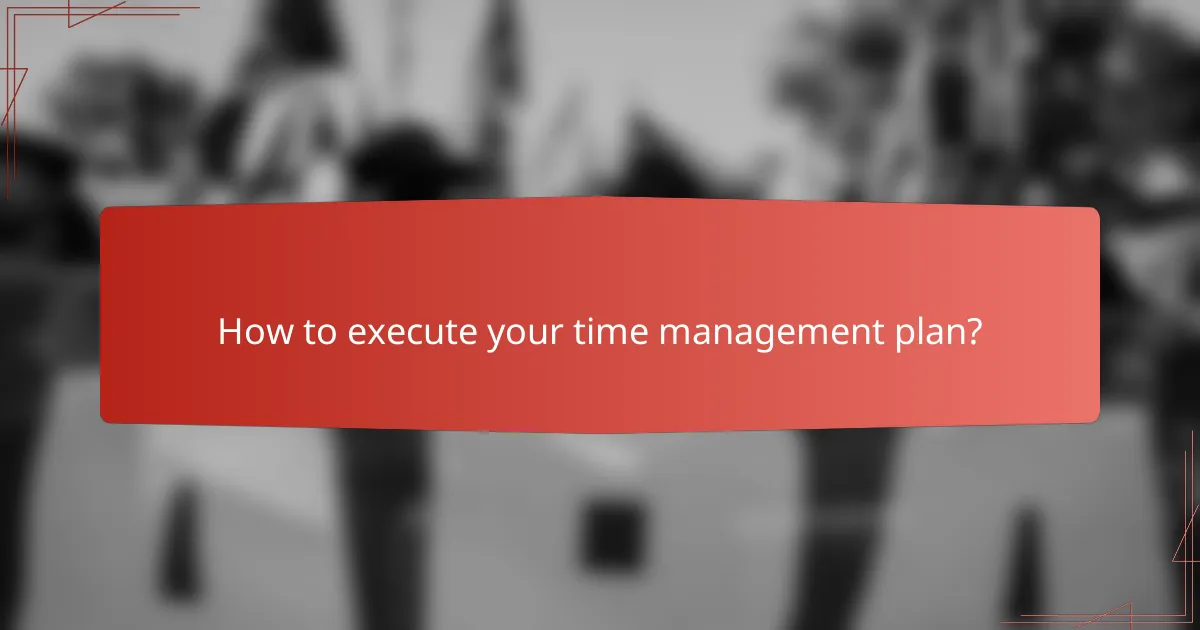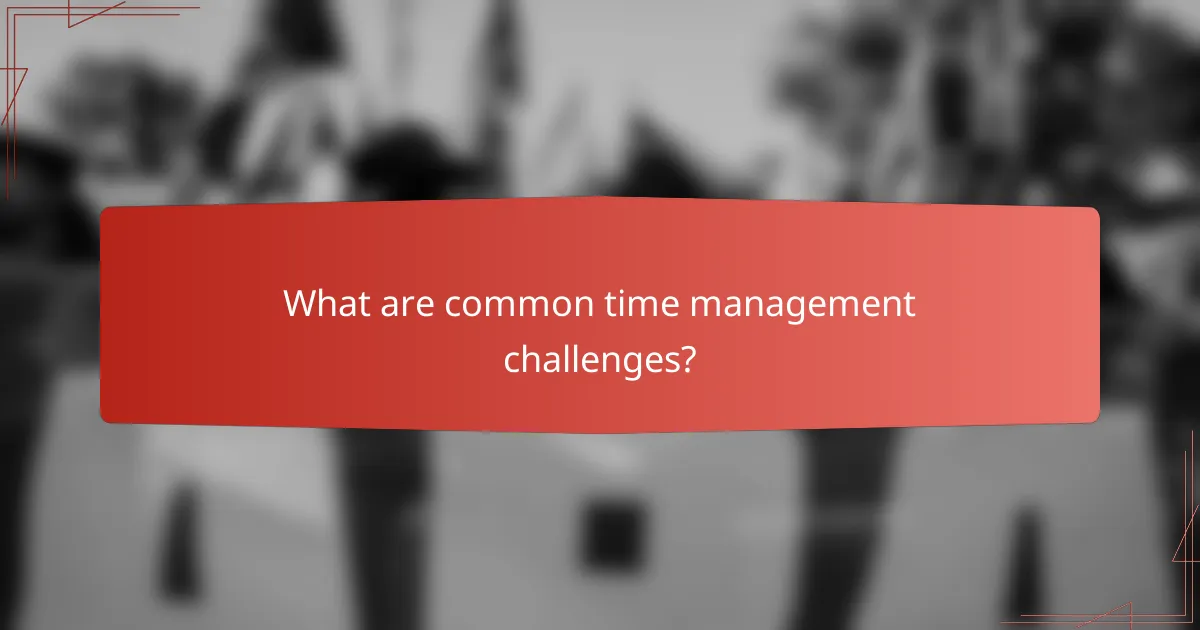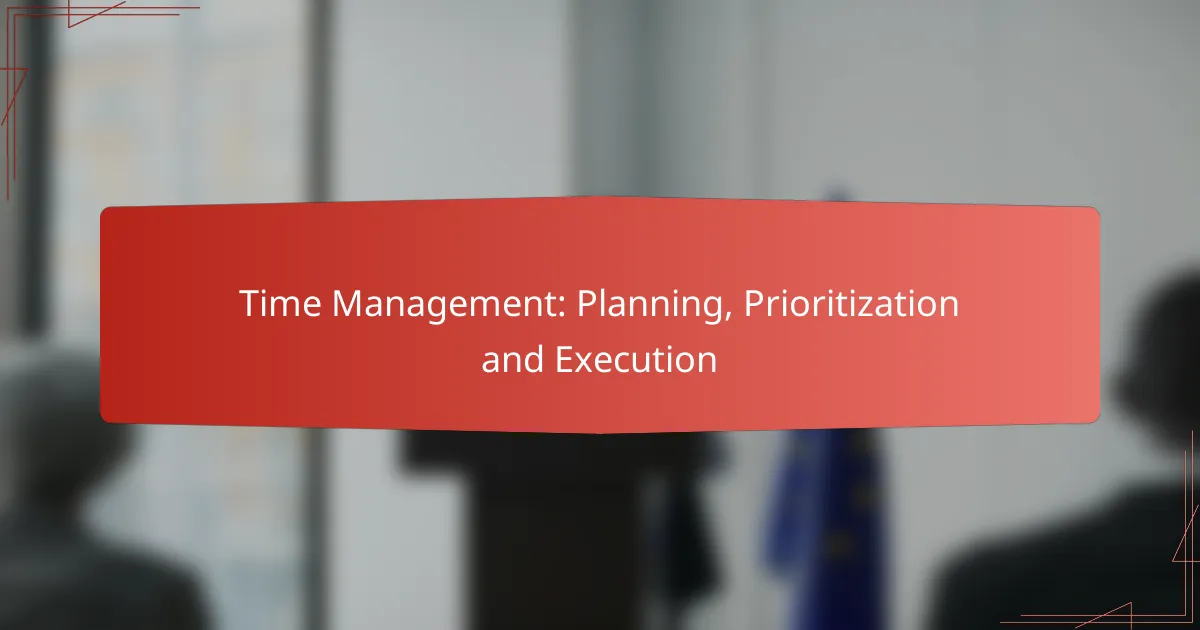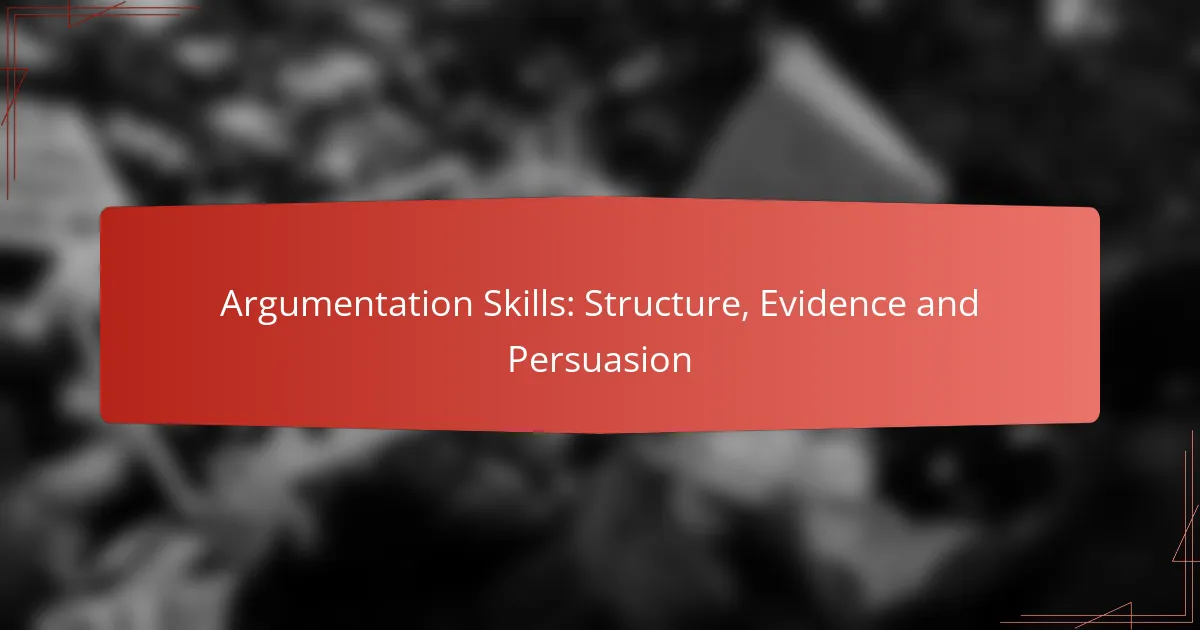Effective time management is crucial for maximizing productivity and reducing stress by organizing tasks and responsibilities. By employing structured planning and prioritization techniques, individuals can focus on high-value tasks that align with their goals, ensuring efficient execution and adaptability in their workflow.

How to effectively plan your time management?
Effective time management involves organizing your tasks and responsibilities to maximize productivity and minimize stress. By implementing structured planning techniques, you can prioritize your workload and ensure that you allocate sufficient time for each task.
Set clear goals
Setting clear goals is essential for effective time management. Goals should be specific, measurable, achievable, relevant, and time-bound (SMART). For instance, instead of saying “I want to get fit,” specify “I will exercise for 30 minutes, five times a week for the next month.”
Regularly reviewing your goals can help you stay focused and adjust them as needed. Consider writing your goals down and placing them where you can see them daily to reinforce your commitment.
Use a calendar tool
A calendar tool can significantly enhance your time management by providing a visual layout of your commitments. Whether you prefer a digital calendar like Google Calendar or a physical planner, choose one that suits your style and needs.
Utilize features such as reminders and recurring events to keep track of deadlines and appointments. This can help prevent last-minute rushes and ensure that you allocate time for both work and personal activities.
Break tasks into smaller steps
Breaking tasks into smaller, manageable steps can make large projects feel less overwhelming. For example, if you need to write a report, divide it into stages such as research, outlining, drafting, and editing.
This approach not only clarifies what needs to be done but also allows you to celebrate small victories as you complete each step. Aim to tackle one small task at a time to maintain momentum and motivation.
Allocate time blocks
Allocating time blocks for specific tasks can help you maintain focus and reduce distractions. Set aside dedicated periods during your day for high-priority tasks, ensuring that you have uninterrupted time to work.
Consider using techniques like the Pomodoro Technique, where you work for 25 minutes followed by a 5-minute break. This method can enhance concentration and prevent burnout, making your time management more effective.

What are the best prioritization techniques?
The best prioritization techniques help individuals and teams focus on tasks that yield the highest value and align with their goals. Effective methods include the Eisenhower Matrix, ABC prioritization method, and MoSCoW method, each offering unique frameworks for evaluating and organizing tasks.
Eisenhower Matrix
The Eisenhower Matrix categorizes tasks into four quadrants based on urgency and importance. This visual tool helps users decide what to focus on, delegate, or eliminate. Tasks are divided into: urgent and important, important but not urgent, urgent but not important, and neither urgent nor important.
For example, a project deadline approaching soon is both urgent and important, while checking emails may fall into the urgent but not important category. Regularly reviewing your tasks in this matrix can clarify priorities and enhance productivity.
ABC prioritization method
The ABC prioritization method assigns a letter to each task based on its importance: A for high priority, B for medium priority, and C for low priority. This straightforward approach allows users to focus on A tasks first, ensuring that critical work is completed before moving on to less important items.
To implement this method, list all tasks and categorize them accordingly. A common pitfall is overloading the A category; aim for a manageable number of A tasks to maintain focus and efficiency.
MoSCoW method
The MoSCoW method categorizes tasks into four groups: Must have, Should have, Could have, and Won’t have this time. This technique is particularly useful in project management, helping teams prioritize features or tasks based on necessity and impact.
For instance, a “Must have” task is essential for project completion, while a “Could have” task is nice to include if time allows. Regularly reassessing these categories ensures that priorities remain aligned with project goals and stakeholder expectations.

How to execute your time management plan?
To execute your time management plan effectively, focus on consistent monitoring and adjustment of your tasks. This involves regularly reviewing your progress, being adaptable to changes, and utilizing tools that enhance productivity.
Daily review sessions
Daily review sessions are crucial for assessing your progress and realigning your priorities. Set aside 10-15 minutes each day to reflect on what you accomplished, what needs more attention, and any obstacles you faced.
During these sessions, consider using a simple checklist or journal to track your tasks. This can help you identify patterns in your productivity and areas where you may need to improve.
Stay flexible and adjust
Staying flexible in your time management plan allows you to adapt to unexpected changes or new priorities. If a task takes longer than anticipated, be prepared to adjust your schedule accordingly.
Regularly reassess your goals and deadlines. If necessary, shift tasks around to ensure that your most important objectives remain on track. This adaptability can prevent stress and enhance overall productivity.
Use productivity apps
Productivity apps can streamline your time management efforts by helping you organize tasks, set reminders, and track progress. Popular options include Todoist, Trello, and Asana, each offering unique features to suit different needs.
When selecting an app, consider factors such as ease of use, integration with other tools, and whether it supports collaboration if you work in a team. Many apps offer free versions, allowing you to test their functionality before committing to a paid plan.

What tools can enhance time management in major cities?
In major cities, effective time management can be significantly improved with the right tools. These tools help streamline tasks, organize schedules, and track productivity, making it easier to navigate busy lifestyles.
Trello for task management
Trello is a visual task management tool that uses boards, lists, and cards to organize projects. Users can create boards for different projects and add cards for individual tasks, allowing for easy tracking of progress and deadlines.
To maximize Trello’s effectiveness, consider setting clear deadlines and assigning tasks to team members. Utilize labels and checklists within cards to prioritize tasks and ensure nothing is overlooked.
Google Calendar for scheduling
Google Calendar is a powerful scheduling tool that allows users to create events, set reminders, and share calendars with others. This can be particularly useful in urban environments where coordinating schedules with colleagues or family is essential.
To make the most of Google Calendar, color-code events based on categories like work, personal, or social. Set recurring events for regular meetings or activities to save time on scheduling.
RescueTime for tracking
RescueTime is a time-tracking application that monitors how users spend their time on digital devices. It provides insights into productivity patterns, helping users identify areas for improvement.
To effectively use RescueTime, review weekly reports to understand time allocation and adjust habits accordingly. Set goals for focused work sessions and limit distractions by blocking certain websites during peak productivity hours.

What are common time management challenges?
Common time management challenges include procrastination, poor prioritization, and distractions. These issues can hinder productivity and lead to missed deadlines, making it essential to identify and address them effectively.
Procrastination
Procrastination is the act of delaying tasks or decisions, often resulting in stress and reduced productivity. It can stem from various factors, including fear of failure, perfectionism, or feeling overwhelmed by the task at hand.
To combat procrastination, break tasks into smaller, manageable steps. Set specific deadlines for each step to create a sense of urgency. For example, if you have a report due in two weeks, aim to complete the research in the first week and the writing in the second week.
Additionally, consider using techniques like the Pomodoro Technique, which involves working in focused intervals followed by short breaks. This can help maintain motivation and reduce the temptation to procrastinate.



